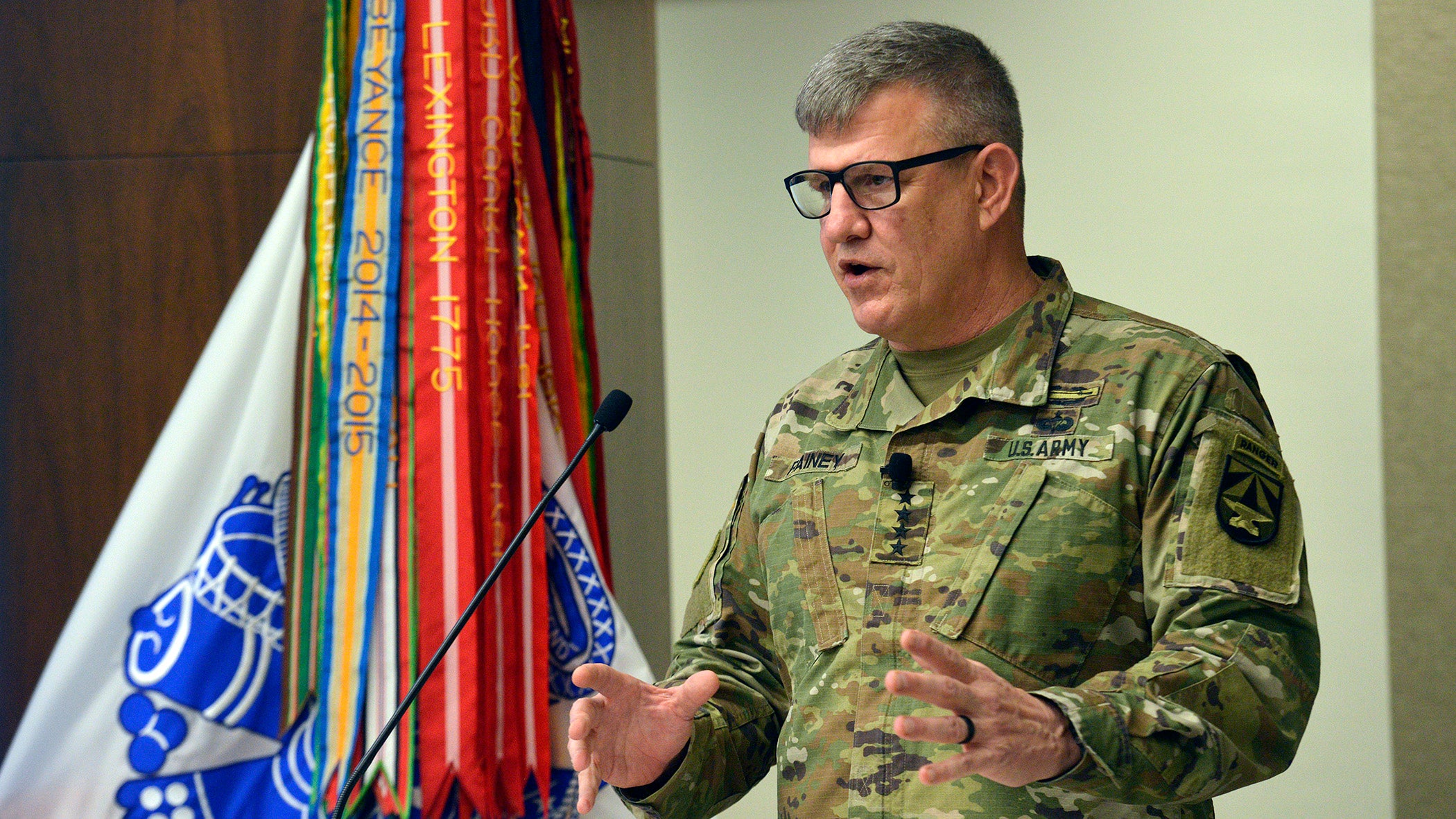Futures Command Looks to Design Army of 2040
Futures Command Looks to Design Army of 2040

As the Army continues to enhance its capabilities for the future fight, the transformation is “bigger and more ambitious” than just modernization, said Gen. James Rainey, commander of Army Futures Command.
“The purpose of AFC, why we exist, is to transform our Army to ensure … future readiness,” Rainey said Feb. 8 at a Coffee Series event hosted by the Association of the U.S. Army.
Modernization is part of transformation but modernizing without transforming could leave the service equipped but lacking the right leaders, trained units and “formational lethality,” Rainey said.
Since taking the reins of Futures Command in October, Rainey said he has shifted the command’s focus from delivering the Army of 2030 to include designing the Army of 2040. “We have to get out further” to stay ahead of near-peer competitors such as China, he said.
To accomplish that mission, Futures Command needs the best people—those with either superior warfighting and leadership experience or outstanding technical expertise, Rainey said. “You can’t do anything without people, and there’s a competition for talent,” he said.
The organization is also focused on improving integration. “We have a bunch of great things happening across our materiel and nonmateriel solutions, [but] there is an opportunity to be more integrated,” particularly with industry and academia, Rainey said.
While the Army must remain ready, it’s critical to not lose sight of longer-term goals, he said. To prepare for 2030 and 2040, the service must constantly reevaluate its requirements and capabilities “agilely, every year” in a campaign of continuous learning.
“We are the best Army in the world today, and AFC’s piece of the team is to make sure we are the best Army in 2030 and the best Army of 2040,” Rainey said.

